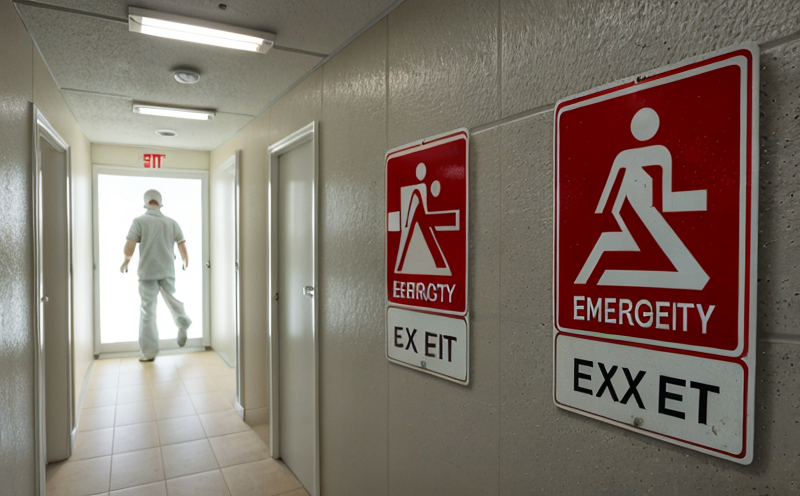Photometric Measurement of Emergency Luminaires
The photometric measurement of emergency luminaires is a critical component in ensuring the safety and compliance of fire safety systems. This process involves the detailed assessment of light distribution, intensity, and uniformity to ensure that these luminaires meet all necessary standards and provide adequate illumination when required during an emergency situation.
In sectors like commercial buildings, hospitals, and public spaces, emergency lighting is essential for guiding people to safety in case of a power failure or other emergencies. The photometric measurement ensures that the luminaires are capable of providing the required light levels as per the specified standards.
The process involves several key steps. First, the luminaire is placed in a calibrated test chamber where its output is measured under controlled conditions. This includes measuring the total luminous flux (in lumens), the distribution pattern of the light, and the uniformity across the tested area. The data collected during this process is then compared against the relevant standards to ensure compliance.
The instrumentation used in these measurements includes photometers, spectroradiometers, and other specialized equipment designed to capture precise readings under controlled conditions. The results of these tests are crucial for ensuring that emergency luminaires meet the necessary performance criteria, such as maintaining a minimum light level over a specified area during an emergency.
Understanding the test parameters is essential for quality managers and compliance officers. For instance, the International Electrotechnical Commission (IEC) specifies certain standards like IEC 60598-1:2020 that outline the requirements for luminaires used in emergency lighting systems. These standards ensure that the luminaires are not only functional but also safe and reliable.
The photometric measurement process is crucial for R&D engineers as it allows them to refine designs and improve performance. By analyzing the results of these tests, they can identify areas where improvements are needed to meet or exceed industry standards. This data-driven approach helps in optimizing the design and ensuring that the luminaires perform optimally under real-world conditions.
For procurement personnel, understanding the photometric measurement process is equally important. They need to ensure that the luminaires they purchase comply with all relevant standards and can be tested using this method. This ensures that the products meet the necessary safety and performance criteria, which is vital for maintaining high standards in fire safety.
| Standard | Description |
|---|---|
| IEC 60598-1:2020 | This standard specifies the general requirements for luminaires and their components, including those used in emergency lighting systems. |
| EN 13470-2:2016 | This European standard provides technical specifications for the design and performance of emergency lighting systems. |
| ASTM F2863-19 | This American Society for Testing and Materials standard outlines the requirements for photometric testing of luminaires in emergency lighting applications. |
Applied Standards
- IEC 60598-1:2020 – This standard outlines the general requirements for luminaires, including those used in emergency lighting systems.
- EN 13470-2:2016 – This European standard provides detailed specifications for the design and performance of emergency lighting systems.
- ASTM F2863-19 – This American standard specifies the requirements for photometric testing of luminaires used in emergency lighting applications.
Benefits
- Ensures compliance with international standards, thereby reducing legal risks and ensuring safety.
- Improves the reliability of emergency luminaires by identifying and addressing performance deficiencies early in the design process.
- Enhances overall fire safety by providing accurate and reliable illumination during emergencies.
- Saves costs associated with rework or replacement due to non-compliant products.
Environmental and Sustainability Contributions
- By ensuring that emergency luminaires perform optimally, this process helps in reducing unnecessary energy consumption during emergencies.
- The precise measurement of light output allows for the efficient use of resources, contributing to a more sustainable approach.
- Compliance with international standards promotes the development and use of environmentally friendly products that meet high performance and safety criteria.





